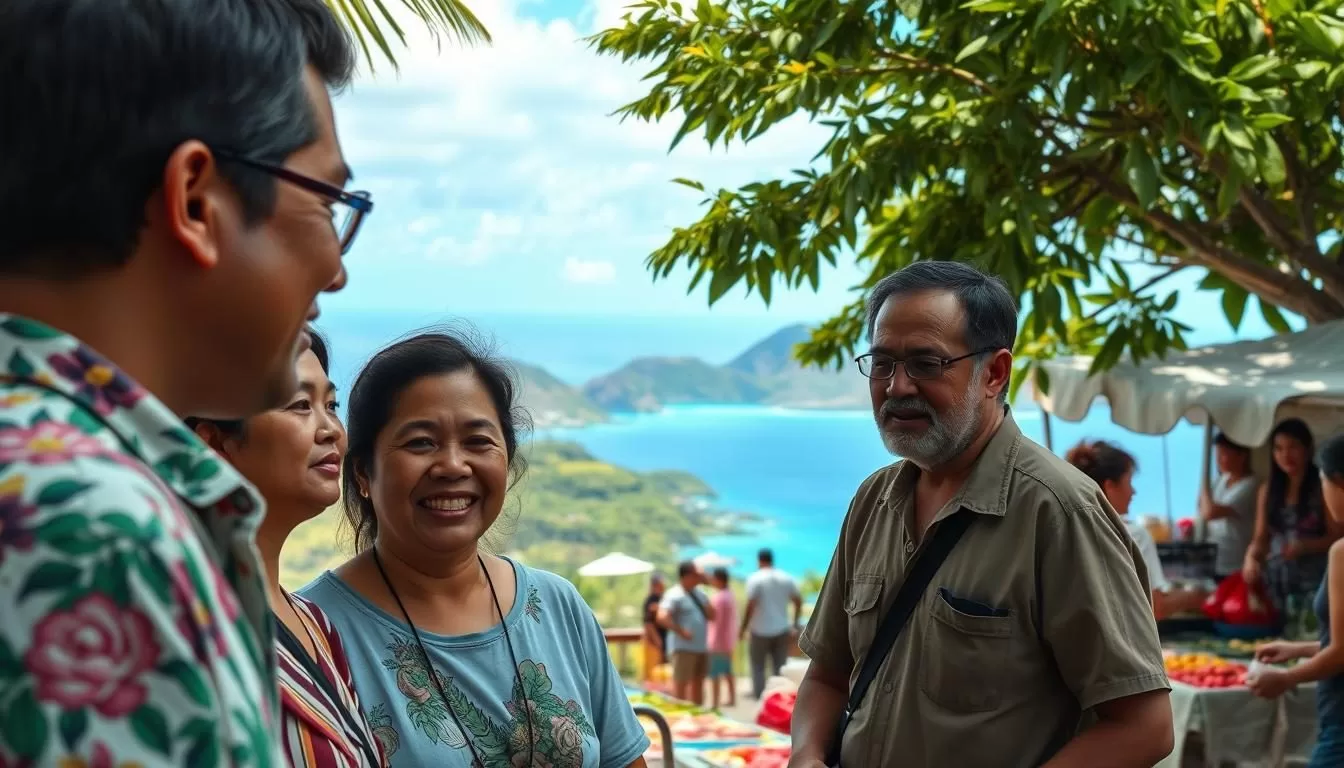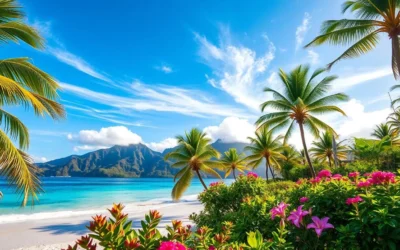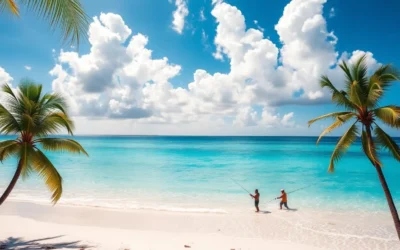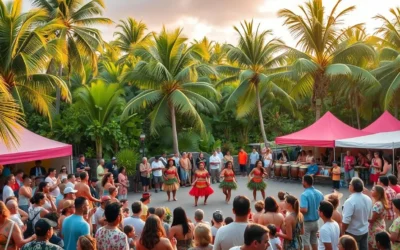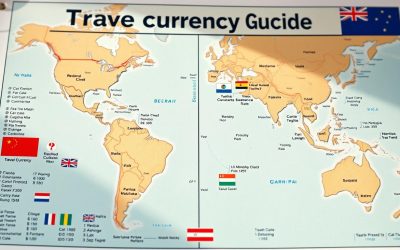✓ Accommodations✓ Flights✓ Rental Cars✓ Tours & Activities
Welcome to the Northern Mariana Islands, a place where language tells the story of its rich cultural heritage. Here, English, Chamorro, and Carolinian stand as the official languages, reflecting the island’s diverse history and identity.
Chamorro, spoken by over 58,000 people, is deeply rooted in the region’s traditions. Meanwhile, Carolinian, though considered a threatened language, remains a vital part of the community. These languages are more than just words—they are a bridge to the past and a key to understanding the island’s unique character.
As you explore this U.S. territory, you’ll discover how migration and history have shaped its linguistic landscape. From Spanish influences to the voices of newer generations, the Northern Mariana Islands offer a fascinating glimpse into the power of language.
Join us as we delve into the stories behind these languages and their role in preserving the island’s cultural legacy. Let’s uncover how words connect people to their roots and shape the future of this vibrant community.
Overview of the Northern Mariana Islands
Step into a world where history and geography intertwine in the Northern Mariana Islands. This U.S. territory is home to 14 islands, with Saipan, Tinian, and Rota being the most prominent. These islands are part of the Pacific Islands chain, offering stunning landscapes and a rich cultural heritage.

Geographical and Demographic Insights
The Northern Mariana Islands cover a total area of 464 km², with Mount Agrihan standing as the highest point at 965 meters. The tropical climate and diverse geological features, including active volcanoes and coral reefs, make this region truly unique.
As of 2022, the population is estimated at 55,650, with a density of 113 people per km². The ethnic makeup is diverse, with Filipinos making up 35.3% and Chamorros 23.9% of the population.
Historical Background at a Glance
The islands’ history dates back to 1500 BC, with the first settlers believed to have made the longest uninterrupted ocean-crossing voyage in human history. Over the years, the region has seen Spanish, German, and Japanese influences, shaping its culture and language.
In 1975, nearly 80% of the population voted to become a U.S. commonwealth, solidifying its political status. Today, the islands are a vibrant blend of traditions and modernity.
“The Northern Mariana Islands are a testament to resilience and cultural diversity, where every island tells a story.”
| Key Facts | Details |
|---|---|
| Total Area | 464 km² |
| Population (2022) | 55,650 |
| Main Islands | Saipan, Tinian, Rota |
| Highest Point | Mount Agrihan (965 m) |
Governance and Cultural Evolution in the CNMI
From colonial rule to commonwealth status, the islands’ journey is a testament to adaptability. Over the years, shifts in power have shaped the region’s identity, blending colonial influences with local traditions.
From Colonial Rule to Commonwealth Status
The islands’ history began with Spanish colonization in the 16th century. By 1565, Spanish sovereignty was proclaimed, though permanent settlements didn’t start until 1668. The arrival of Jesuit priest Diego Luis de Sanvitores marked a turning point, leading to significant cultural and demographic changes.
In the 19th century, European colonial rivalries intensified. Germany took control in 1899, followed by Japan during World War I. The islands’ strategic location made them a focal point during World War II, with Saipan becoming a key battleground.
After the war, the islands became part of the U.S. Trust Territory of the Pacific. In 1975, residents voted to become a U.S. commonwealth, achieving this status in 1986. This transition brought changes in governance, including the establishment of a local government and the preservation of cultural heritage.
Cultural Preservation and Language Policy
Cultural evolution has been a constant theme throughout the islands’ history. Despite colonial influences, traditions like family heritage and community ties have endured. The creation of the Chamorro-Carolinian Language Policy Commission in 1982 highlights efforts to preserve indigenous languages.
Today, the islands are a vibrant mix of cultures, with influences from Spain, Japan, and the U.S. This diversity is reflected in the region’s art, music, and daily life. The population, estimated at 51,295 in 2023, includes a mix of ethnic groups, with Filipinos and Chamorros forming the majority.
| Key Milestones | Details |
|---|---|
| Spanish Colonization | Began in 1668, led by Jesuit priest Diego Luis de Sanvitores. |
| German and Japanese Rule | Germany took control in 1899; Japan occupied the islands during World War I. |
| U.S. Commonwealth Status | Achieved in 1986 after a 1975 referendum. |
| Language Preservation | Chamorro-Carolinian Language Policy Commission established in 1982. |
The islands’ story is one of resilience, where political decisions have shaped both governance and cultural identity. As you explore this region, you’ll discover how history and tradition continue to influence its people and way of life.
Northern Mariana Islands: Official and widely spoken languages
Language is a cornerstone of identity in this U.S. territory. Here, three official languages—English, Chamorro, and Carolinian—shape daily life, governance, and cultural expression. Each plays a unique role in connecting people to their heritage and the modern world.
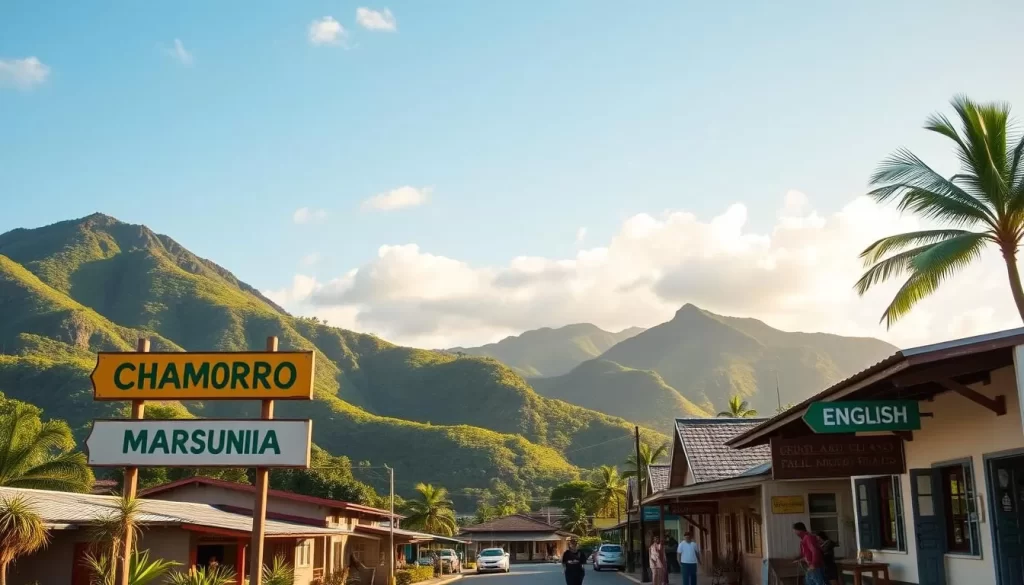
The Official Trio: English, Chamorro, and Carolinian
English serves as the primary language for administration and education. It bridges communication across diverse communities and ensures smooth governance. Chamorro, spoken by approximately 58,000 people, is deeply rooted in the region’s traditions and history. Carolinian, though considered a threatened language, remains vital for the Refaluwasch community, reflecting their cultural identity.
These languages are more than tools for communication. They are symbols of resilience and pride. Historical influences, from Spanish colonization to U.S. governance, have shaped their evolution and usage.
Efforts to preserve these languages are ongoing. Educational initiatives and language policies aim to balance modernization with cultural heritage. For example, the Chamorro-Carolinian Language Policy Commission works to promote and protect these indigenous languages.
| Language | Role | Speakers |
|---|---|---|
| English | Administration, Education | Primary language for most residents |
| Chamorro | Cultural, Traditional | Approximately 58,000 |
| Carolinian | Community, Identity | Threatened, limited speakers |
Understanding these languages offers a glimpse into the region’s multi-layered identity. Whether you’re visiting or learning about this territory, the official trio provides a window into its rich heritage and vibrant culture.
Exploring Chamorro and Carolinian Heritage
Discover the vibrant linguistic heritage of the Northern Mariana Islands, where Chamorro and Carolinian languages thrive. These languages are more than just tools for communication—they are living connections to the islands’ rich cultural legacy.
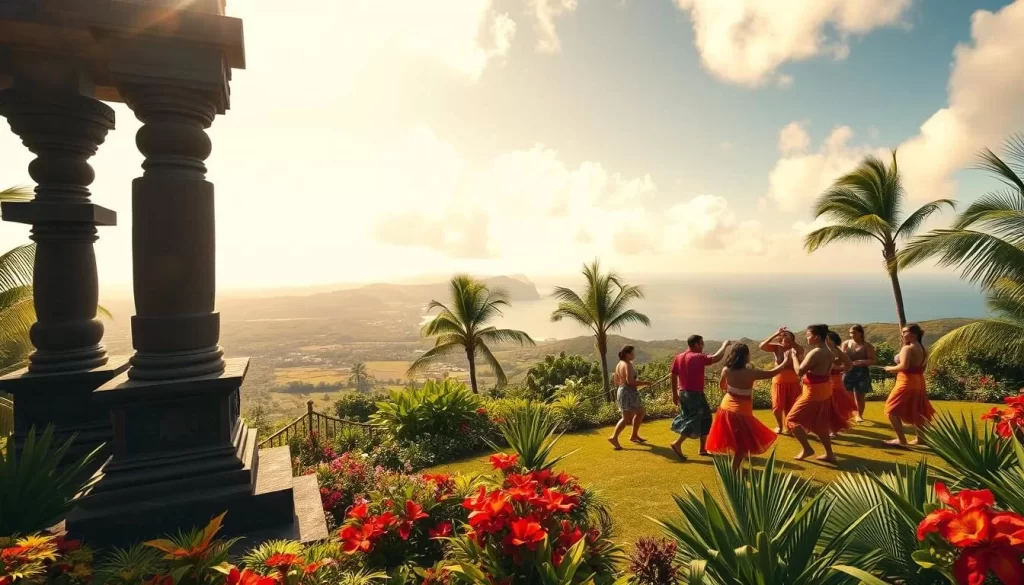
Linguistic Roots and Evolution
Chamorro, the language of the indigenous Chamorro people, has a history spanning nearly 4,000 years. Its evolution reflects the islands’ complex history, from Spanish colonization to modern U.S. governance. Carolinian, spoken by the Refaluwasch community, traces its origins to the Caroline Islands and has adapted over centuries.
Both languages have been shaped by external influences. Spanish colonization introduced new vocabulary, while Japanese and American administrations further impacted their usage. Despite these changes, Chamorro and Carolinian remain vital to the islands’ identity.
Language Preservation Efforts
Preserving these languages is a priority for the community. The Chamorro-Carolinian Language Policy Commission, established in 1982, works to promote and protect these indigenous languages. Educational programs, dictionaries, and online resources are helping to keep them alive for future generations.
Families play a crucial role in this effort. Many households continue to speak Chamorro or Carolinian at home, ensuring that younger generations learn and value their linguistic heritage. Community events, like cultural festivals, also reinforce the importance of these languages.
“Language is the soul of a culture. Preserving Chamorro and Carolinian is preserving who we are.”
| Language | Origin | Preservation Efforts |
|---|---|---|
| Chamorro | Indigenous to the Mariana Islands | Educational programs, dictionaries |
| Carolinian | Caroline Islands | Community initiatives, media projects |
By exploring resources like the Carolinian language guide, you can deepen your understanding of this unique heritage. Together, we can ensure that Chamorro and Carolinian continue to thrive as symbols of the islands’ enduring culture.
The Role of Lesser-Known Languages
Beyond the official languages, the islands’ linguistic diversity tells a story of cultural exchange. While English, Chamorro, and Carolinian dominate, lesser-known tongues like Tanapag add depth to the region’s heritage. These languages reflect centuries of migration, trade, and interaction.
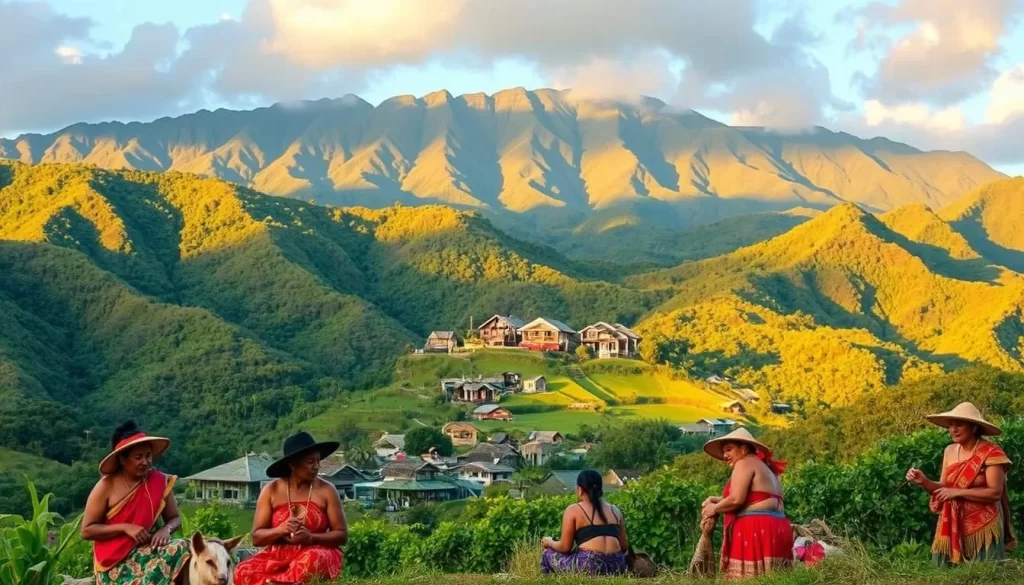
Tanapag and Its Significance
Tanapag, a nearly extinct Micronesian language spoken on Saipan, is a testament to the islands’ rich history. Once vibrant, it now faces the threat of disappearing. Efforts to preserve it highlight the importance of safeguarding even the smallest linguistic threads.
Languages like Tanapag are more than just words. They are living connections to the past, offering insights into the lives of those who came before. Preserving them ensures that future generations can understand their roots.
Influence of Philippine and Pacific Languages
The islands’ linguistic landscape is shaped by waves of migration. Many Philippine languages, such as Tagalog and Ilocano, are spoken here. Chinese and other Pacific island languages also contribute to the region’s diversity.
Migration and trade have played a key role in this linguistic mosaic. Workers from countries like Bangladesh and China brought their languages, enriching the cultural fabric. This blend of tongues reflects the islands’ history as a crossroads of cultures.
- Tanapag: A nearly extinct language with deep historical roots.
- Philippine Languages: Tagalog, Ilocano, and others add to the linguistic mix.
- Pacific Languages: Tongues from across the Pacific contribute to the diversity.
Every language, no matter how small, is a part of the islands’ identity. Learning about them offers a deeper understanding of the region’s unique heritage. As you explore, you’ll discover how these languages weave together to create a vibrant cultural tapestry.
For more on the linguistic diversity of the region, check out this detailed study.
Linguistic Resources and Educational Tools
Unlock the linguistic treasures of the islands with practical tools and resources. Whether you’re a beginner or looking to deepen your knowledge, there are plenty of ways to explore Chamorro, Carolinian, and other regional languages. These resources not only help you learn but also support ongoing efforts to preserve these vital parts of the islands’ heritage.
Dictionaries, Phrasebooks, and Online Guides
Start your journey with dictionaries and phrasebooks designed for Chamorro and Carolinian. The Official Chamorro-English Dictionary, published in 2009, offers over 9,000 entries, making it a valuable resource for learners. For Carolinian, online guides and community-driven projects provide insights into this threatened language.
Here are some top resources to explore:
- Chamorro-English Dictionary: A comprehensive guide with detailed definitions and examples.
- Carolinian Language Guide: Online tools and lessons to help you master the basics.
- Phrasebooks: Handy for travelers and language enthusiasts alike.
Learning Opportunities to Enhance Your Skills
Beyond books, there are many ways to immerse yourself in the languages. Community initiatives and government programs play a key role in promoting language learning. For example, the Chamorro-Carolinian Language Policy Commission works to preserve and teach these languages.
Here’s how you can get involved:
- Online Courses: Platforms offering lessons in Chamorro and Carolinian.
- Mobile Apps: Convenient tools for learning on the go.
- Cultural Events: Festivals and workshops that celebrate linguistic heritage.
Improving your language skills not only helps you connect with the local culture but also supports efforts to keep these languages alive. For more insights, check out this detailed guide on the islands’ linguistic diversity.
Conclusion
The linguistic and cultural diversity of this Pacific region is a testament to its rich history. From the resilience of Chamorro and Carolinian to the influences of migration and governance, every language tells a story. Understanding these tongues offers a deeper connection to the people and their heritage.
Key milestones, like the establishment of the Chamorro-Carolinian Language Policy Commission in 1982, highlight efforts to preserve these vital parts of identity. Historical events, from colonization to modern initiatives, have shaped the evolution of language and culture.
Take pride in exploring this unique heritage. Use available resources to enhance your skills and celebrate the connection between home, family, and community. Continue learning and discovering the deep roots that make this place so special.
For more insights into the journey of Pacific territories, visit this detailed guide.
The above is subject to change.
Check back often to TRAVEL.COM for the latest travel tips and deals.
